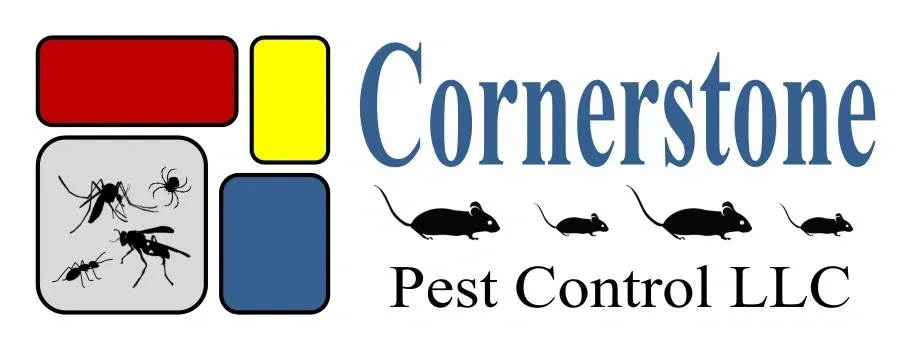As winter fades and spring takes hold in New England, warmer temperatures bring new life to the outdoors—but they also signal the return of common spring pests. Many pests that remained dormant or sheltered during the cold months begin to emerge in search of food, water, and optimal breeding conditions. Homeowners should be on high alert for early signs of pest activity to prevent infestations before they become a major issue.
Common Early Spring Pests & Their Warning Signs
- Increased Ant Sightings
Spring is prime time for ant activity, as rising temperatures encourage colonies to search for food. You may notice trails of ants marching through your kitchen, pantry, or near entry points such as doors and windows. Some common species, like carpenter ants, can cause structural damage by burrowing into wood.
What to Look For:
- Ant trails leading to food sources
- Small piles of sawdust near wooden structures (a sign of carpenter ants)
- Ant nests outside near your foundation
Prevention Tips:
- Store food in airtight containers
- Regularly clean kitchen surfaces and sweep away crumbs
- Seal entry points such as cracks in walls or gaps around windows
- Termite Swarmers
Spring is termite swarming season, meaning reproductive termites (called swarmers) take flight to establish new colonies. Spotting flying termites or discarded wings near doors and windows is a strong indication that a termite colony is nearby—or worse, inside your home.
What to Look For:
- Small, winged insects flying near your home
- Discarded wings near windowsills or entry points
- Mud tubes along your home’s foundation (a sign of subterranean termites)
Prevention Tips:
- Eliminate wood-to-soil contact around your home
- Reduce moisture buildup in crawl spaces and basements
- Schedule a professional termite inspection if you suspect activity
- Mosquito Breeding Grounds
As temperatures rise and snow melts, standing water becomes a perfect breeding ground for mosquitoes. These biting pests are not only a nuisance but also carry diseases such as West Nile virus and Eastern equine encephalitis (EEE). Early prevention can reduce mosquito populations before they peak in summer.
What to Look For:
- Pools of standing water in gutters, birdbaths, and planters
- Increased mosquito presence at dawn and dusk
- Mosquito larvae in stagnant water sources
Prevention Tips:
- Regularly empty and clean birdbaths, pet water bowls, and outdoor containers
- Keep gutters clean and free of debris
- Install screens on windows and doors to prevent mosquitoes from entering your home
- Rodent Activity Increases
Mice and rats often seek shelter indoors during the winter months. As spring arrives, their activity may increase as they search for food and expand their nests. Rodents can cause property damage by chewing on wires, insulation, and food packaging, and they also pose health risks by spreading diseases.
What to Look For:
- Droppings in kitchen areas, basements, or attics
- Gnaw marks on wood, wires, or food packaging
- Nesting materials like shredded paper or fabric
Prevention Tips:
- Store food in sealed containers and clean up crumbs promptly
- Block entry points by sealing cracks and gaps around your home’s foundation
- Trim back vegetation near your home to reduce hiding spots
How to Prepare for Spring Pests
Spring pest issues can escalate quickly if left unchecked. Here’s how to prepare your home and yard to minimize pest activity:
- Inspect & Seal Entry Points
Many pests enter homes through small gaps in doors, windows, and cracks in the foundation. Inspect your home for any openings and seal them with caulk or weather stripping. Pay special attention to areas around utility pipes, vents, and chimneys.
- Reduce Clutter
Pests thrive in cluttered spaces, particularly in basements, garages, and storage areas. Organizing and decluttering these spaces can remove potential hiding spots and nesting areas.
- Eliminate Moisture Problems
Many pests, including mosquitoes, termites, and ants, are drawn to moisture. Fix any leaks, ensure proper drainage around your home, and use dehumidifiers in damp areas like basements to deter infestations.
- Maintain Your Yard
Keeping your yard well-maintained can reduce pest populations. Trim bushes and trees away from your home, remove piles of leaves and debris, and mow your lawn regularly. These simple steps can discourage pests from settling near your home.
- Schedule a Pest Inspection
A professional pest inspection is one of the best ways to identify and address potential infestations before they get out of hand. Experienced pest control specialists can spot early warning signs, provide targeted treatments, and offer recommendations for long-term prevention.
Don’t Let Pests Take Over Your Home This Spring
Springtime should be a time of renewal and enjoyment—not a season of battling pest invasions. By staying vigilant and taking proactive measures, you can protect your home from unwanted guests. If you suspect an infestation or want to safeguard your home with professional pest control solutions, contact Cornerstone Pest Control today at (603) 395-9200 or complete the form on this page. Our expert team is ready to help you enjoy a pest-free spring!
